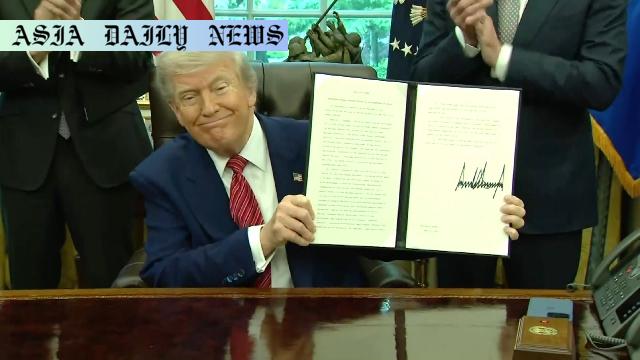Nuclear Reform: US pushes for energy dominance, speeding up nuclear plant approvals and enhancing electricity for future tech demands.
US aims to revolutionize its nuclear power sector with faster approval timelines.
Nuclear facility approvals cut from over 10 years to 18 months.
The policy aligns with increasing power demands from advanced technologies like AI and quantum computing.
Energy dominance is a key part of competing in the AI arms race against China.

US Nuclear Industry Faces Major Reforms
The United States has embarked on a transformative journey to reshape its nuclear industry, focusing on reducing regulatory barriers and drastically accelerating approvals for nuclear power plants. President Donald Trump’s recent executive orders not only introduce efficiency into a system traditionally laden with bureaucratic delays but also set ambitious goals for fueling America’s technological and economic ambitions. With the introduction of an 18-month deadline for nuclear reactor approvals—down from the usual decade-long period—the reforms lay a promising groundwork for robust growth in nuclear energy capacity.
This emerging strategy centers on meeting the mounting electricity demands spurred by revolutionary advancements in artificial intelligence (AI), quantum computing, robotics, and other technology sectors. In an age driven by data-intensive applications, scalable and sustainable electricity resources have transitioned from a utility to a necessity. By facilitating streamlined nuclear projects, the administration hopes this evolution will secure uninterrupted energy for technological innovations critical to modern America.
Energy Dominance to Shape Global Competition
The strategic intent of these reforms goes beyond domestic considerations. US Interior Secretary Doug Burgum highlighted the administration’s vision of achieving energy dominance—a term that implies substantial global influence stemming from energy self-sufficiency and geopolitical maneuvering via energy exports. In his remarks, Secretary Burgum framed these efforts as pivotal to winning the “AI arms race” against China, showcasing the multifaceted stakes of energy reform. As major powers increasingly invest in AI technologies, the underlying energy infrastructure becomes an indispensable asset in dictating success.
Through these actions, the US government also underlines the need for decisive planning in infrastructural development. Secretary Burgum’s claim—’the next five years will determine the next 50 years’—underscores that today’s energy ventures will influence economic opportunities and international standings for decades to come, offering a roadmap for other nations also reliant on high-tech advancements.
Challenges and Implications
While the benefits of fast-tracked approvals and enhanced energy production offer exciting possibilities, the initiative raises possible concerns. Critics might argue about safety regulations being overlooked in the pursuit of speed. Nuclear energy debates have historically balanced concerns of efficiency with ecological risks, and reforms should tread cautiously to avoid sacrificing safety measures critical to preventing disastrous outcomes.
Simultaneously, speculation looms over how the administration will handle investments in next-generation nuclear technologies like small modular reactors (SMRs) optimized for renewable integration. These considerations amplify both the stakes and intrigue surrounding America’s path forward under this bold reform effort.
Global Impact of the Nuclear Reforms
Globally, the US’s pivot towards expediting nuclear energy development could reverberate across international markets. With China already advancing its own nuclear strategies, the race for domination in high-tech capabilities introduces heightened tensions. Energy, long a catalyst for dominance, now transcends physical resources and underpins intangible assets like AI prowess, signaling the arrival of a new era of competition wherein the stakes are not only economic but existential.
The reforms, if implemented successfully, might trigger a shift in the global nuclear landscape. Other countries could follow suit to expedite their projects, fostering innovation yet risking regulation dilution. The dual pressure to accelerate change while guaranteeing safety standards will likely become a universal challenge for nations aiming to align future energy policies with evolving technological ecosystems.



Commentary
Pioneering a Path to Technological Sustainability
The US government’s reform of its nuclear industry demonstrates a forward-thinking initiative aimed at bridging energy production with future technological demands. In aligning its policies with the rapid evolution of AI, quantum computing, and other digital innovations, the administration wields nuclear energy not just as a utility but as an essential economic enabler. This effort cannot be understated given global economic competition and the intensifying ‘AI arms race.’
While these reforms are undoubtedly ambitious, I cannot help but contemplate the challenges reactor developments might encounter. Balancing the urgency for energy infrastructure with long-standing safety protocols will be taxing but necessary. Nuclear accidents in history serve as sobering reminders of what can go wrong when vigilance is compromised. Therefore, I hope reforms embody speed without recklessness, cultivating security alongside ambition.
Energy Dominance as a Competitive Advantage
The emphasis on “energy dominance” resonates deeply in geopolitical discussions. Energy is the backbone of innovation and progress, and nations who control its flow often control much else. When framed against China’s burgeoning dominance in AI and renewable capabilities, the reforms take on a dimension of urgency. The interplay between tech readiness and energy sufficiency will become increasingly critical—not just for the US, but for all significant technological players.
Yet, I wonder if energy dominance can also serve as a uniting factor globally. Instead of driving solely competitive motives, perhaps the reforms could align with collaborations in achieving cleaner energy transitions worldwide. Doing so could establish the US not only as a technological leader but also an ally in resolving one of humanity’s chief sustainability questions: efficient energy access for everyone.
In conclusion, America’s endeavor to transform nuclear energy approvals sets a new bar for other countries. However, as with all visionary undertakings, the success of these reforms will depend on decisive yet cautious execution. They hold the potential to usher us into an era where energy infrastructure powerfully complements technological revolutions, shaping societies for generations to come.